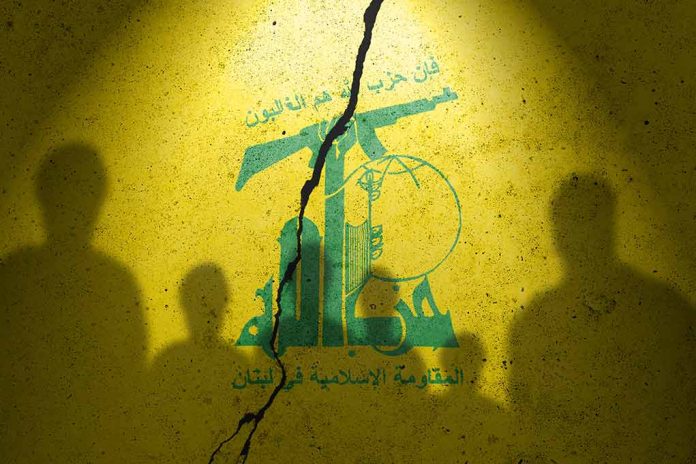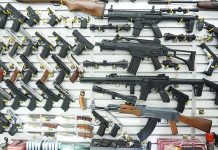
The Israeli Defense Forces’ recent strategic ground offensive has shaken Hezbollah to its core, seizing a staggering number of weapons.
At a Glance
- IDF seized over 85,000 Hezbollah weapons, including rockets and rifles.
- The arms, primarily from Iran and Russia, showcase a diverse and old collection.
- Vehicles disguised as civilian were used for weapon transport by Hezbollah.
- This operation significantly weakens Hezbollah’s capabilities in the region.
IDF’s Strategic Military Operation
The Israeli Defense Forces (IDF) launched a methodical ground offensive in late September, moving into southern Lebanon targeting Hezbollah terror infrastructure. This mission, involving IDF special forces, marked the onset of a measured military campaign. Initiated with precision ground raids, the operation escalated into broader yet calculated maneuvers designed to destabilize Hezbollah’s operational capabilities, responding effectively to the looming threat posed in the region.
During these tactical operations, the IDF seized a massive cache of Hezbollah’s weaponry. This includes rocket launchers, anti-tank missiles, rifles, and RPG launchers along with vehicles, such as ATVs and trucks, disguising weapon setups as civilian to aid transport. These seizures not only reflect the depth of Hezbollah’s tactical planning but also highlight the complete spectrum of weapon varieties sourced primarily from Iran and Russia, ranging from decades-old arsenal to freshly wrapped military systems.
💣 𝟴𝟱,𝟬𝟬𝟬+ 𝘄𝗲𝗮𝗽𝗼𝗻𝘀, 𝗺𝗶𝘀𝘀𝗶𝗹𝗲𝘀 𝗮𝗻𝗱 𝗺𝗶𝗹𝗶𝘁𝗮𝗿𝘆 𝗶𝘁𝗲𝗺𝘀 𝗯𝗲𝗹𝗼𝗻𝗴𝗶𝗻𝗴 𝘁𝗼 𝗛𝗲𝘇𝗯𝗼𝗹𝗹𝗮𝗵 𝘄𝗲𝗿𝗲 𝗰𝗼𝗻𝗳𝗶𝘀𝗰𝗮𝘁𝗲𝗱 𝗯𝘆 𝘁𝗵𝗲 𝗜𝗗𝗙 𝗶𝗻 𝗦𝗼𝘂𝘁𝗵𝗲𝗿𝗻 𝗟𝗲𝗯𝗮𝗻𝗼𝗻
Since October 2024, IDF forces operated against Hezbollah in… pic.twitter.com/pHpopQlf5m
— Israel Defense Forces (@IDF) December 27, 2024
Strategic Implications of the Seized Arsenal
The weapons obtained give a clearer picture of Hezbollah’s combat strategies. Items like the 107mm rockets, mortars manufactured between 2009 to 2012, and anti-tank weapons like Kornet missiles were found. The strategic significance lies in Hezbollah’s storage tactics, often embedding weapons within local homes and villages for quick deployment. Drones and assorted firearms such as the Iranian Toophan system and SPG-9 launchers form part of the sophisticated assortment of arms acquired by Israeli forces.
“Hezbollah’s weapons are sourced mostly from Russia and Iran, and some are locally produced, military sources said.” – military sources Source
This monumental seizure of approximately 85,000 items not only cripples Hezbollah’s fighting power but also supports IDF’s broader objective to ensure enhanced stability and security along northern Israeli borders by methodically diminishing Hezbollah’s weapon stockpile.
Over 85,000 Weapons, Missiles and Military Items Belonging to Hezbollah Were Confiscated by the IDF in Southern Lebanon
At the beginning of October 2024, the IDF began limited, localized, targeted ground raids to dismantle Hezbollah terrorist infrastructure in southern Lebanon.… pic.twitter.com/OvrQbLuMTo
— Israel War Room (@IsraelWarRoom) December 25, 2024
Regional Diplomatic Developments
With military confrontations stalling, Lebanese Prime Minister Najib Mikati has begun diplomatic engagements, urging Israeli military withdrawal contingent on a cease-fire agreement that involves Lebanese troop deployment. Citing the conflict’s severe infrastructural damages, Mikati is rallying international aid including from the World Bank and EU, pivoting towards initiatives rebuilding war-torn areas. His appeals fortify the ceasefire terms requiring mutual withdrawal of Israeli and Hezbollah forces, aiming for Lebanon’s sovereign restoration.
This development underlines the tense socio-political landscape as Lebanese leaders navigate between addressing humanitarian concerns and geopolitical commitments. Israel’s tactical endeavors appear closely coordinated with diplomatic pathways towards longstanding peace and security in the volatile region.






















